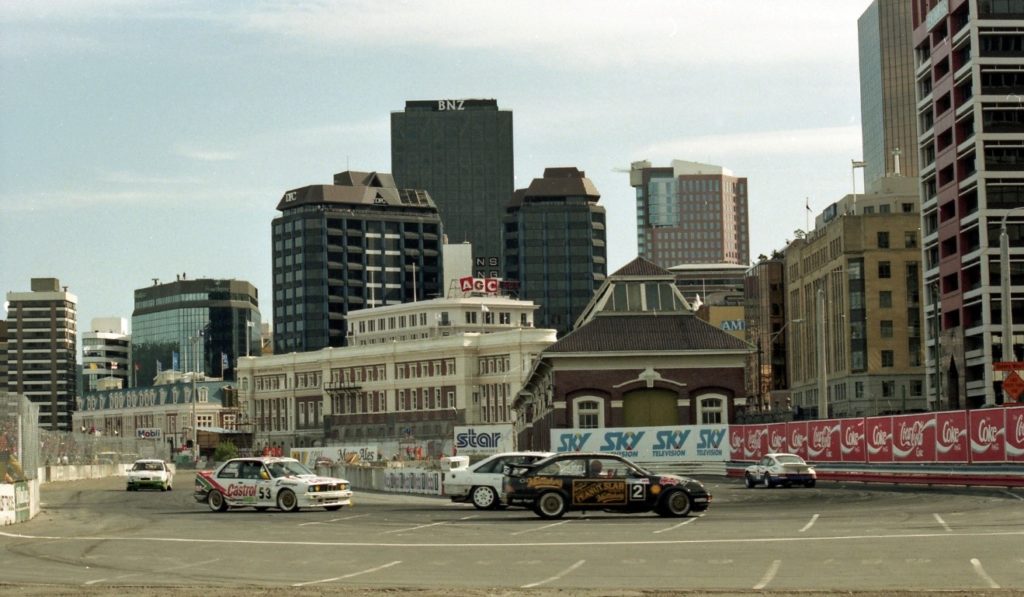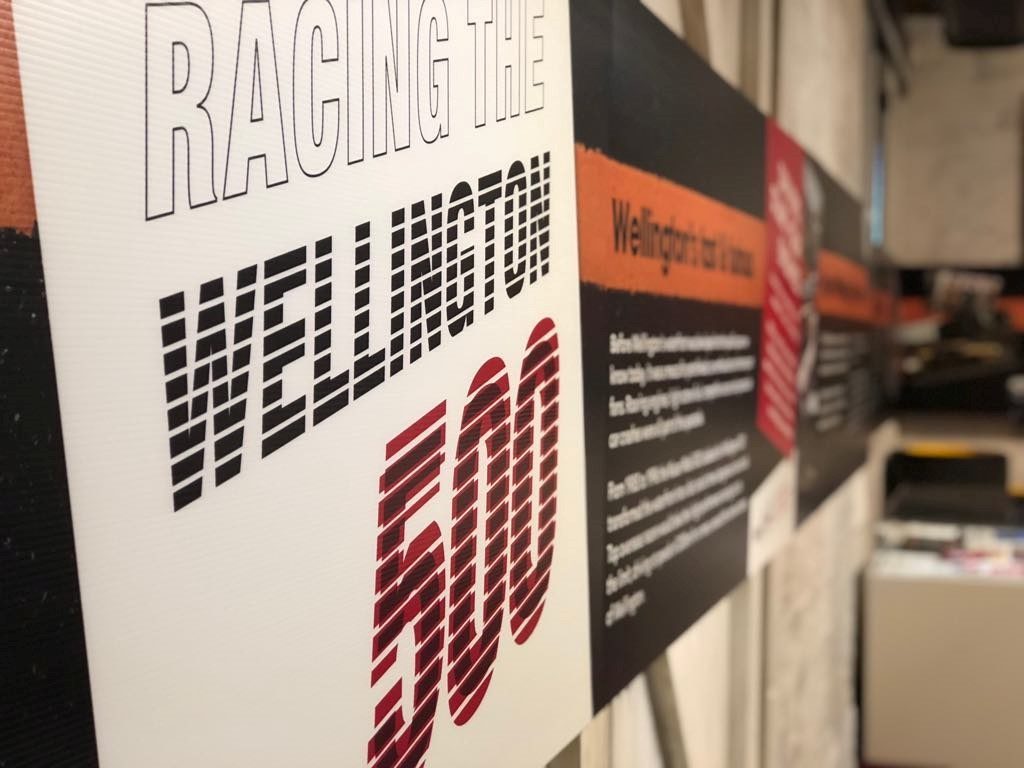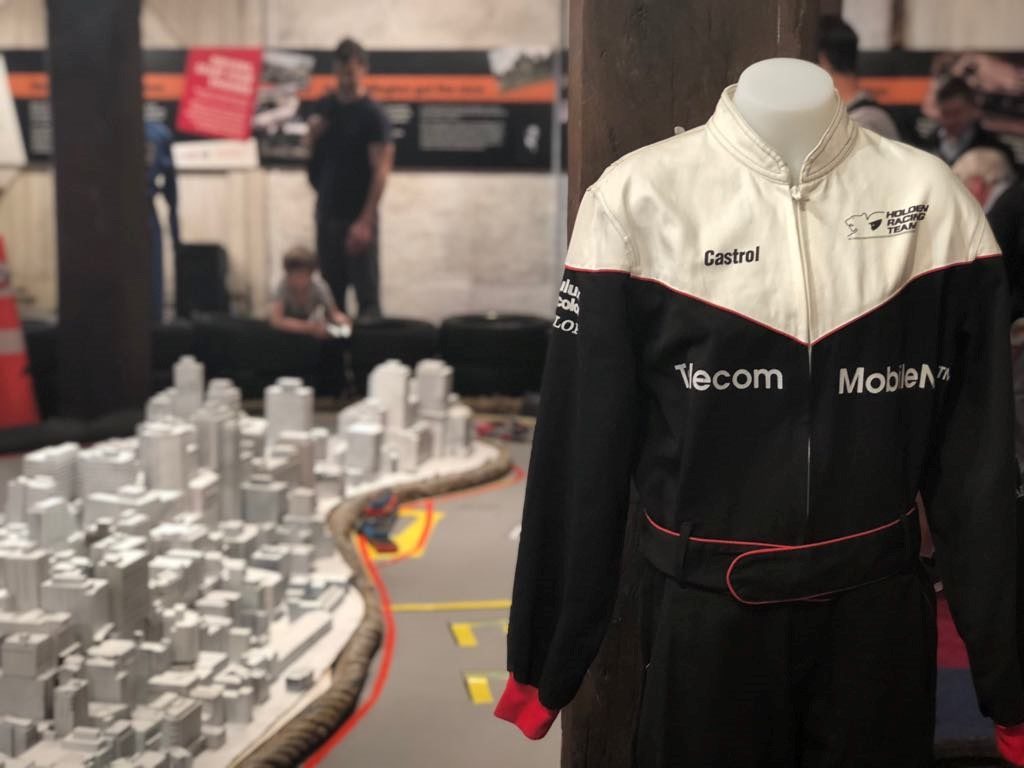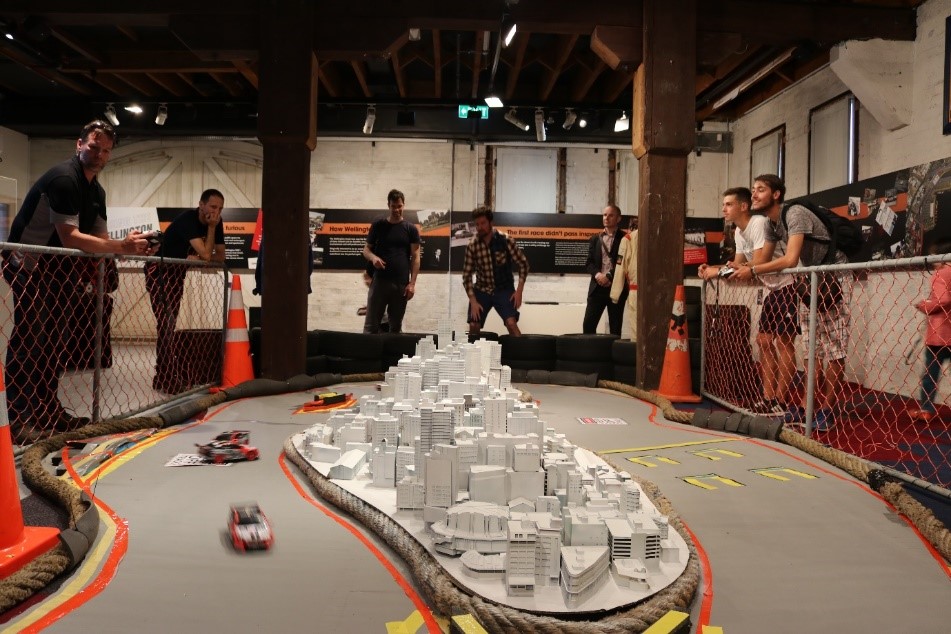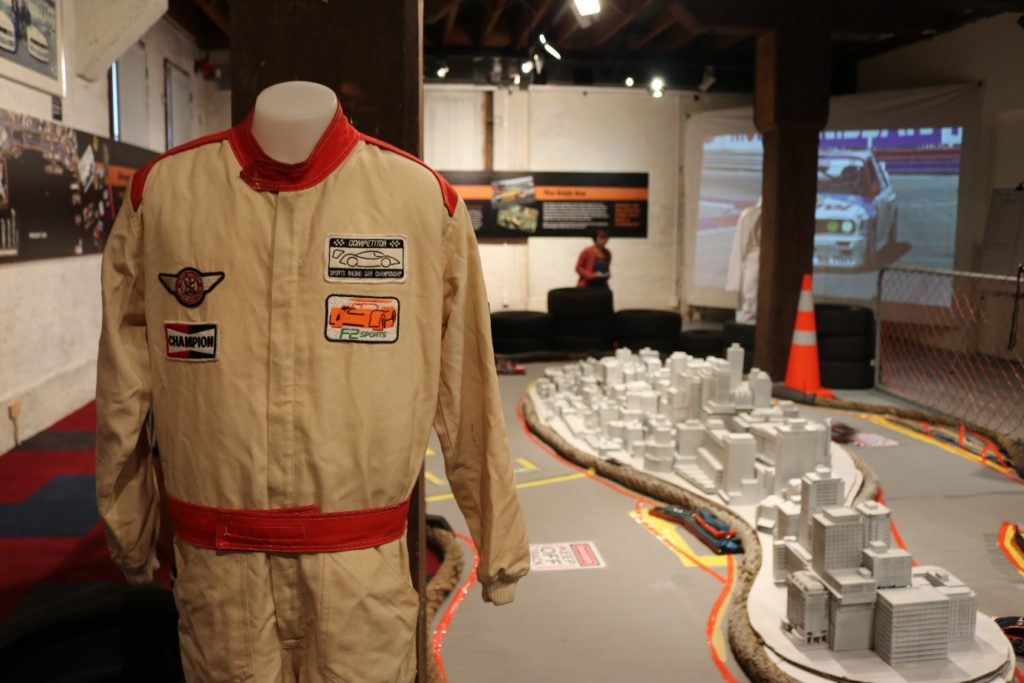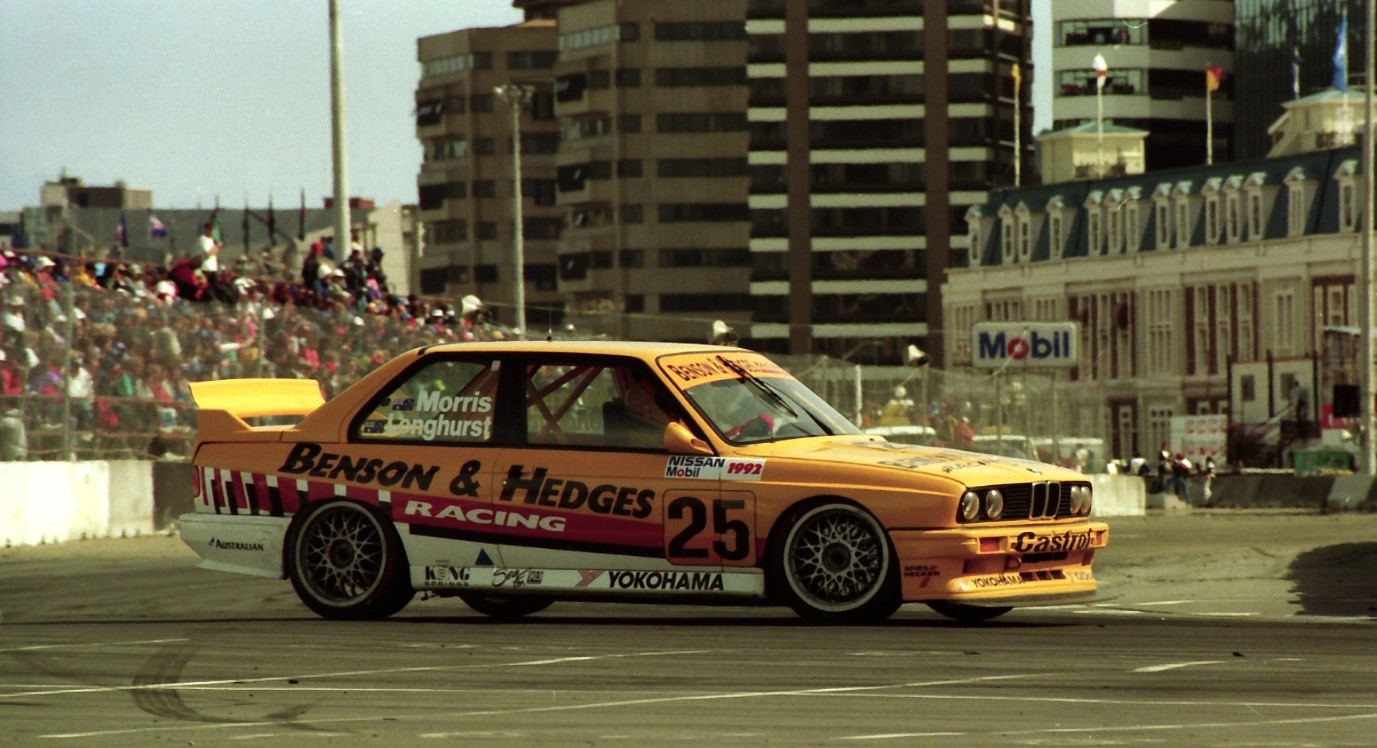
How the Wellington 500 Came to Pass.
By Tom Etuata, Digital Communicator Museums Wellington
We’re bringing the Wellington street race back. Wait, Wellington had a street race? The Nissan Mobil 500 (later dubbed the ‘Wellington 500’), transformed the Wellington waterfront into a fast (and at times dangerous) race circuit. From 1985 to 1996, top touring race car drivers from around the world took their high performance touring cars to the limit, driving at speeds of 200km/hr or more around the narrow streets of Wellington.
Before the waterfront developed into the artistic public space we know today, it was a mecca for fast cars and fearless top overseas drivers that drew big crowds of motorsport enthusiasts and petrol heads from all over New Zealand and the globe. The event built an international reputation and by 1989 Wellington was dubbed ‘the Monte Carlo of the South Pacific.’
And over the Christmas break, Wellington Museum is bringing the Wellington 500 back!
Well, kind of.
Located in Flux is an exhibition about the Wellington 500 street race. To keep the kids (and tired adults) occupied we’ve also got radio controlled cars – try your hand at racing them around a small scale model ‘mash-up’ of iconic Wellington buildings.
Our Events Programmer Benjamin James, the brains behind it, came up with the genius idea of getting Capital Model RC Cars to race a mini tournament in the Museum, loosely based on the Wellington 500 street race. Exhibitions Manager David Waller caught whiff of this and thought it could be extended to display some historical content of the street race. And from there the plan was set.
But how could we create an exhibition, especially when there is nothing in the Museum collection related to the street race, next to no budget and only a month and a half to develop it?
By straight-out begging, stealing (in the form of lending) and borrowing.
PUTTING TOGETHER AN EXHIBITION ON THE SMELL OF AN OILY RAG
Firstly, we reached out to the motorsport community – in this case, the Facebook group Bring Back the Wellington Street Race. https://www.facebook.com/wellingtonstreetrace/. Big thanks to Andrew Tierney who runs this Facebook group. He was a flag marshall from the very first race in 1985 to 1992 and still races today in a speedy Formula First Series Car. They gave us permission to use some of their photos (from David Welich) and put a call out to see if anyone had any objects relating to the race that they were happy to donate or loan to us.
More fuel came in the form of video interviews. With a Canon DSLR, a dodgy tripod and and an external microphone, I talked to Andrew Tierney and others who told stories of the race in front of the camera.
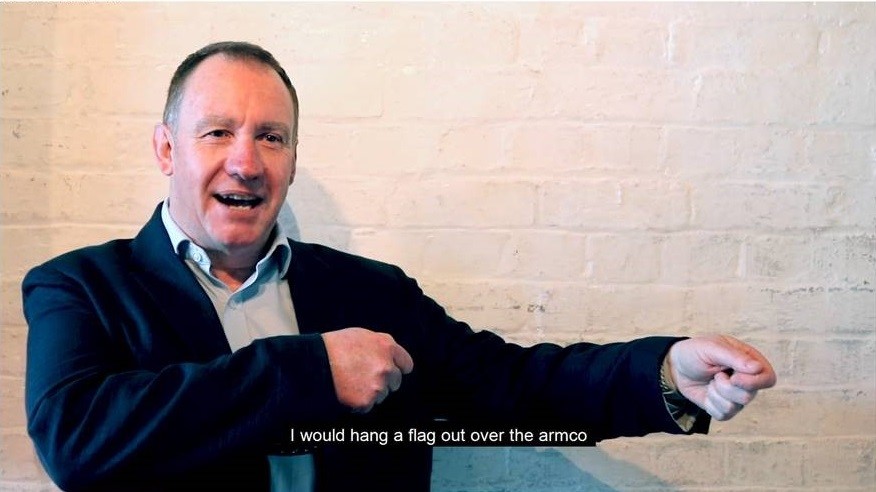
Joining in was Neville Alexander who was happy to be video interviewed. He was the panel-beating tutor for the Wellington Polytechnic Crash Repair Team from 1992 to 1994. He loaned us some Wellington Polytechnic mechanic overalls as well as photos.
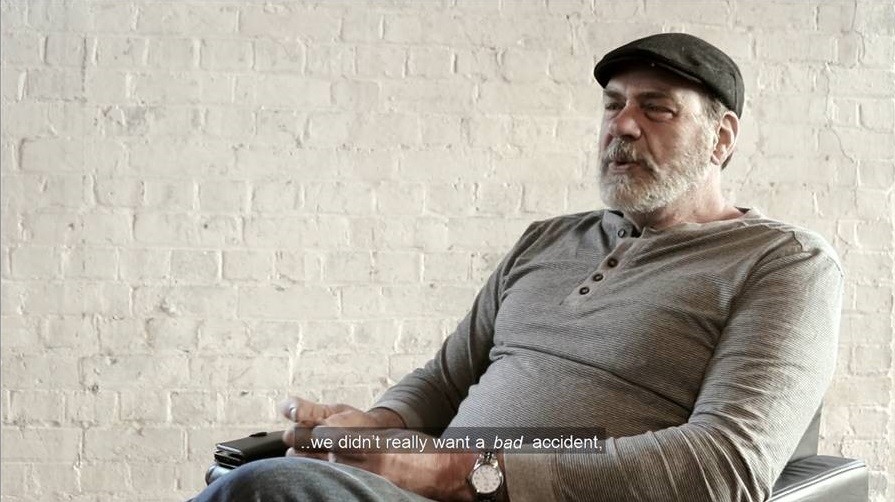
Thanks also to John Crouch, a great motorsport photographer who kindly gave us permission to use his photos for free. Check out his gallery of motorsport images on kiwirallyfan.com.
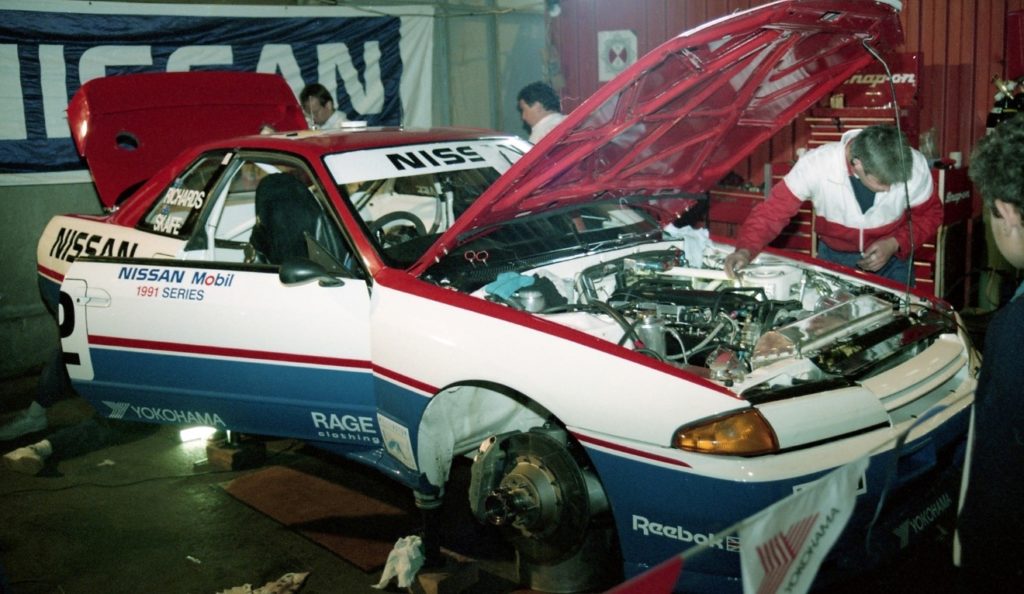
Neil Whiting loaned some of his motorsport memorabilia, which included promotional caps, jackets and race suits he wore when he raced in the Mini Series.
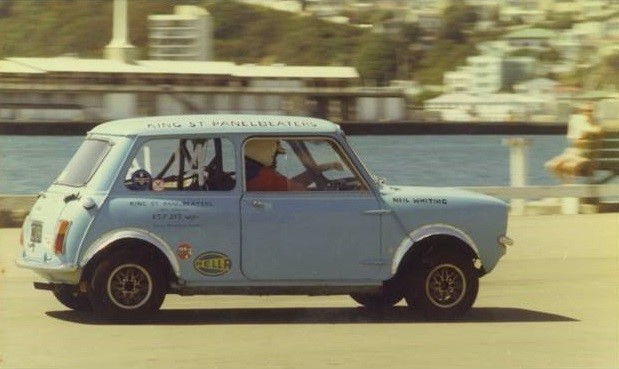
Jaysen Eveleigh loaned us tyres from a Nissan Skyline R-30 that raced in 1986 and 1987 and Grant Matchett lent us a small scale (1:24) replica of the Volvo 240T. The real car, driven by Kiwi Robbie Francevic and Michel Delcourt, won the very first race back in 1985.
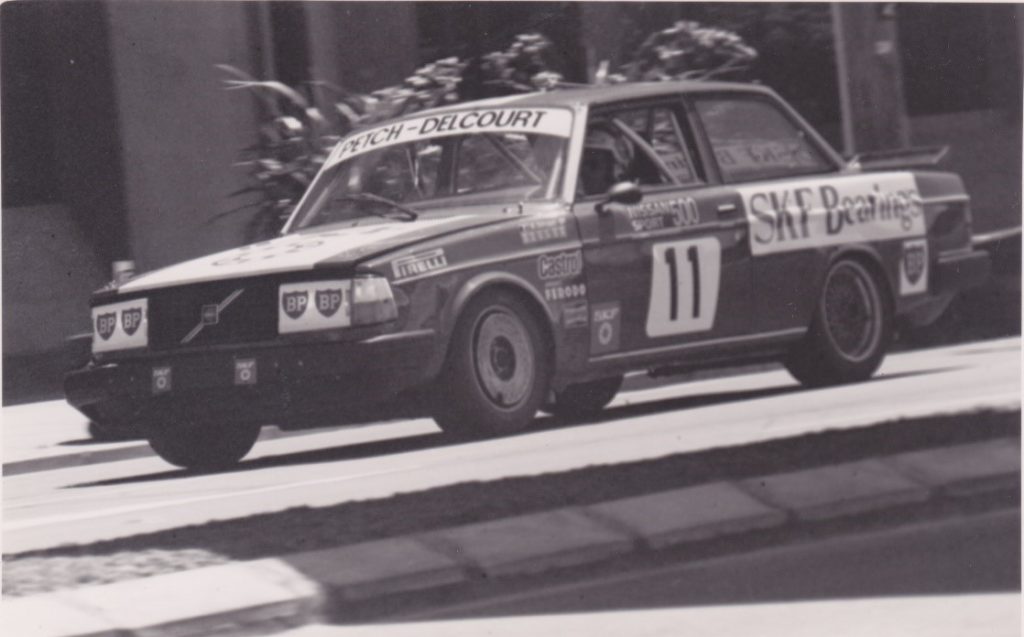
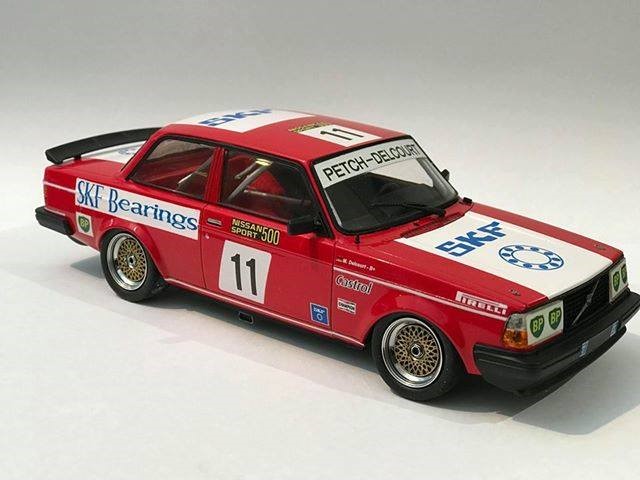
Also, a big shout-out to Sandy McFayden-Rew at Winger BMW Wellington and Jacob Ashby from BMW New Zealand for lending us a rare framed photo of the successful 1989 BMW Schnitzer Team posing on the Wellington waterfront – signed by drivers Robert Ravaglia, Emanuele Pirro, Steve Soper and Fabien Giroix.
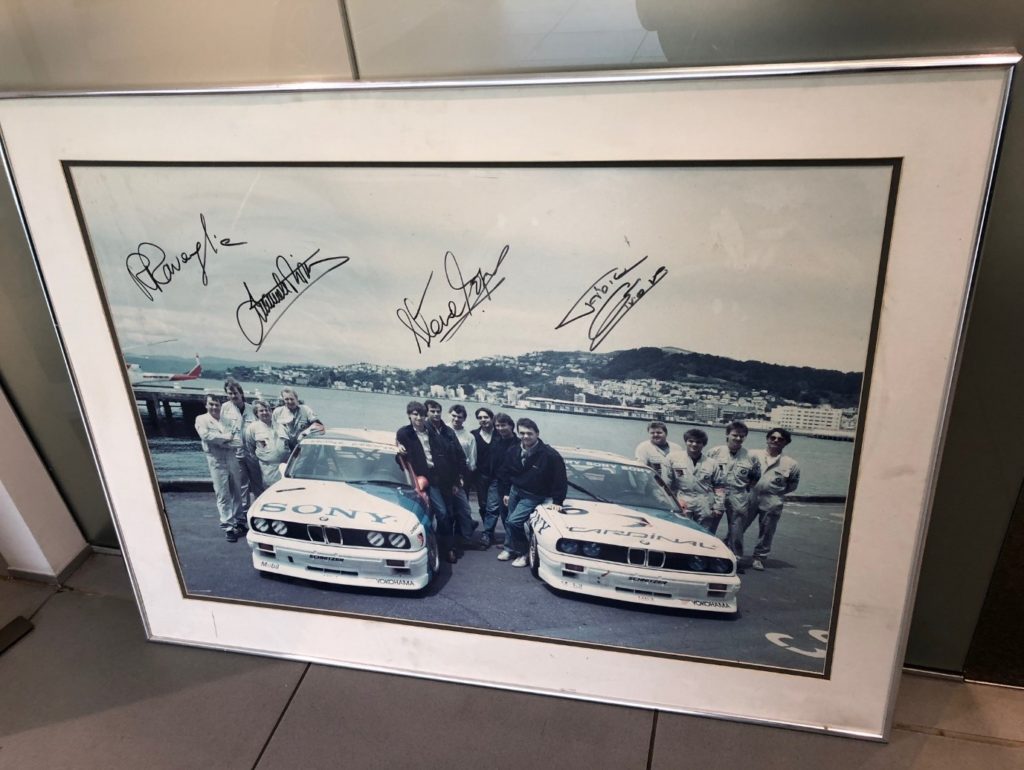
They were the glamour race-team back in 1989. TV1 made a documentary of them called ‘ Monaco, Monza, Macao Wellington ’ which you can view on the NZONSCREEN website on: https://www.nzonscreen.com/title/monaco-monza-macao-wellington-1990/quotes
But we still needed some more horsepower to bring this exhibition up to racing speed.
Enter TV3 and Mediaworks. They gave us the green light to use YouTube race footage from the 1991 and 1996 race and this content made Andrew and Neville’s stories much richer.
SPEAKING OF STORIES – THERE’S A FEW OF THEM.
- A young 13 year-old Scott Dixon (now five time IndyCar World Champion) had his professional racing licence (although he was too young to sit his driver’s licence) and raced a Nissan Sentra. He was seen walking around pit lane wearing a pillow strapped aound his back as he was too small to reach the steering wheel and brakes.
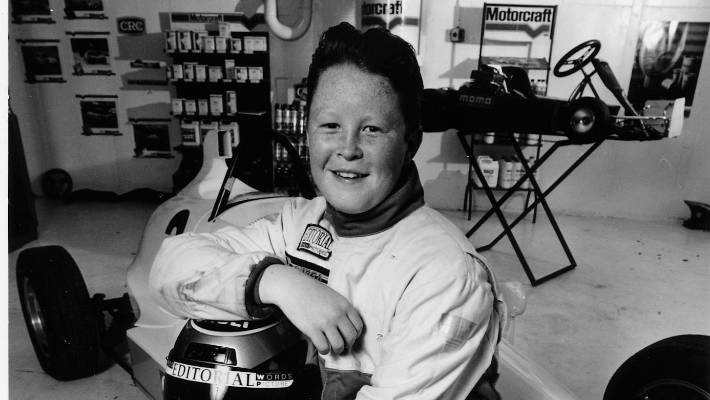
- Wellington City Council offered inner-city residents who complained about the noise free accomodation outside the Wellington CBD area over the race weekend.
- Former Prime Minister David Lange (who was an avid motor enthusiast and drove in the Ford Laser series) took 5th in the Celebrity Race in 1989 (a big thanks to South Canterbury Museum for the use of his photo).
- The Wellington Polytechnic Apprentice Crash Repair Team who had less than 24 hours to repair two cars before the big race.
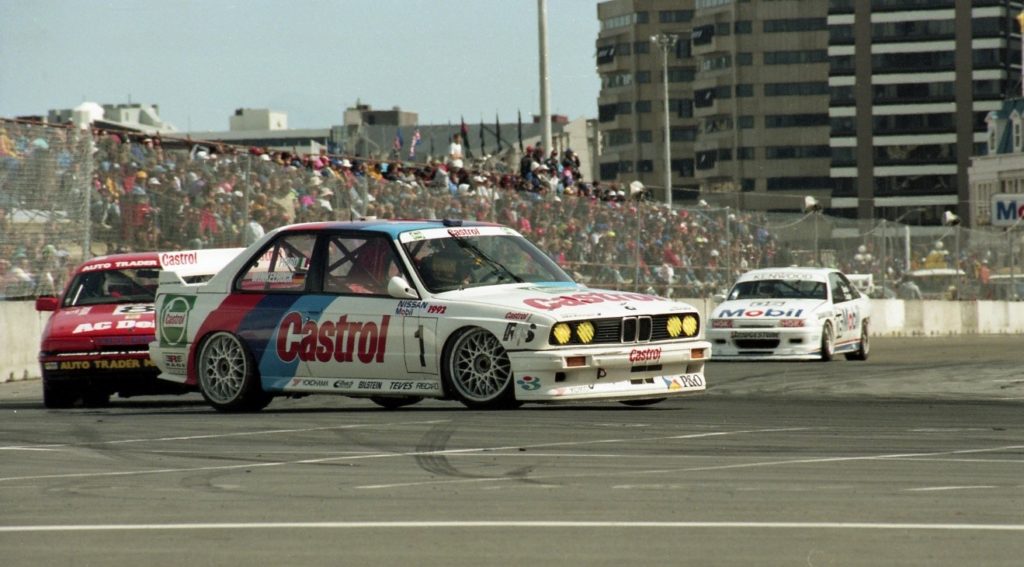
Graphic designer Tessa Baty took over the wheel and created the look of the content boards and did a great job. She used road markings as the main graphic design element. There’s a miniature Wellington in the centre of the RC track itself. The model buildings came courtesy of Wellington City Council and Wellington City Archives.
And a big shout-out goes out to Gazely Nissan Wellington who gave much needed funds to get the 10 RC Supercars for the track.
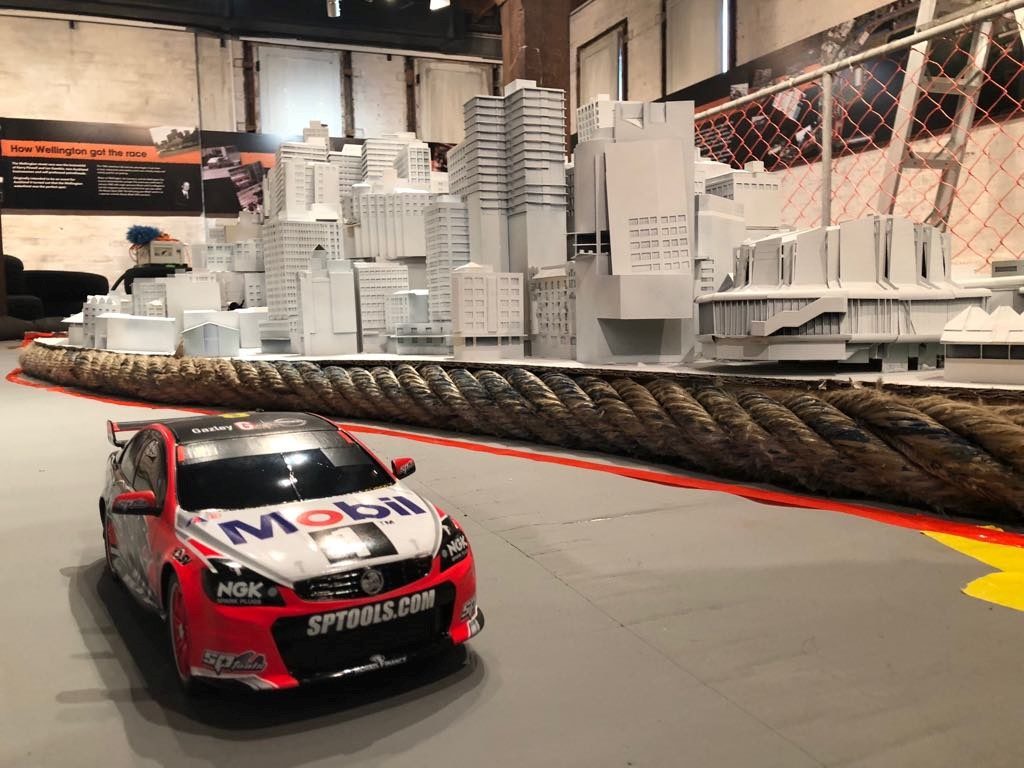
SO, COULD THE WELLINGTON STREET RACE MAKE A COMEBACK?
That’s the question we pose in the exhibition.
“Yes. No question. Absolutely.” Neville Alexander remarked after I interviewed him.
Andrew Tierney mentioned after his interview that with the current situation of climate change and being eco-friendly, if Wellington were to hold a street race again, it could be in the form of a Formula E Street Race (electric cars). These are fast gaining traction as an international sport next to Formula One and the IndyCar World Championship.
“So, how would that sound like on the streets?”
“A bit quiet. But like a vacuum cleaner on steroids”
One thing’s sure, this exhibition definitely won’t be quiet.
So cheers everyone.
Cue chequered flag.
